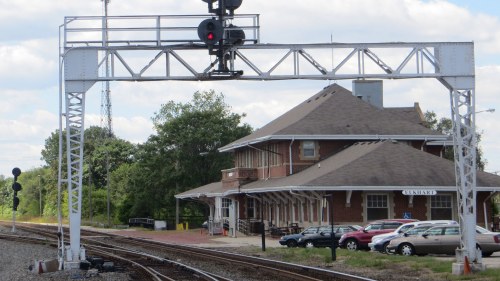A College's Lesson for Midwestern Cities

Students from Monmouth College drafted a report that evaluated the economic development agencies of small cities in eight states across the Midwest.
Across the Midwest, virtually every town, city, county, and state has its own economic development agency aimed at attracting investment, jobs, and economic vitality. But most of these places aren’t getting the investment or jobs they need. The reason may be that their economic development agencies are dropping the ball.
This is the message (stated more politely, of course) of an important class project run by a bunch of students in a Citizenship class at Monmouth College, a small (1,300 students) school in western Illinois. The project focused on economic development practices in Galesburg, a hard-hit industrial city 15 miles to the east, and compared Galesburg’s efforts—especially its web efforts—to those of 50 other similar cities in eight Midwestern states. The professor, Robin A. Johnson, gave me permission to link to the project’s findings and final report.
(It may strike you that Monmouth gets more attention in this blog than its size might justify. There’s a reason. Alone of all the many colleges and universities in the Midwest, Monmouth actually teaches classes on the Midwest. Other schools teach about their states, but none teaches its students anything about the region itself—its history, or economy, or politics. Monmouth’s Global Midwest program is unique and is doing valuable work, of which this project is only the latest.)
The students zeroed in on 50 cities in Ohio, Indiana, Illinois, Missouri, Michigan, Iowa, Wisconsin, and Minnesota that were like Galesburg— small cities between 25,000 and 50,000 people, relatively near a bigger city—Galesburg lies between Peoria and the Quad Cities—with an industrial past and, preferably, college such as Galesburg’s Knox College. The spreadsheet compares the towns in terms of unemployment rates, population gains or losses, median incomes, poverty rates, and educational achievement.
But mostly it compared the work of the websites of the economic development agencies. A few of these agencies are solely public or private, but most are public-private partnerships, and the websites are their front window to the world.
The agencies vary widely in budget and staffing. But they are all too common, the students found, in some aspects:
-
Amateurish websites. Economic agency sites seemed to be more focused than just those for the cities themselves, but the report gives the impression that none are too sharp. It said these sites are hard to navigate, lack important information, are poorly designed and seldom make it clear that the city prioritizes jobs and development.
-
Too little information. It was hard to get pertinent information on city budgets or other subjects. When asked, staff members too often didn’t have the answers or weren’t interested in getting them.
You can say that these students are just kids, so what do they know? Well, the fact that they’re just kids means they’ve grown up in an online world. They know websites and website design better than their elders. They’re used to using the web to get information, and they know when they’re getting bad information or none at all.
Too often, no doubt, economic development officials take potential investors seriously, but inquiring students not so seriously. This is dumb. These agencies and their websites are their towns’ official greeters, and they ought to treat any outside caller like royalty.
Not every town is doing badly. The students found some outstanding websites—in Sheboygan, WI, Portage, IN, Fort Dodge, IA, and Mankato MN, for instance. Muskegon, MI, Ottumwa, IA, and Elkhart County, IN, also ranked high. They also found towns pursuing “niche strategies;” Danville, IL, for instance, has set up a Business Hall of Fame and has a program to attract young professionals to the area.
It’s hard to equate a town’s website, though, with its economic fortunes. Some towns with good sites, such as Muskegon or Columbus, IA, have thriving economies. Others with good sites, such as Danville or Fort Dodge, are struggling.
The report ended by noting that in the age of globalization, small cities like Galesburg “face enormous challenges,” and should be learning from each other. If the report enables these cities to compare their performances across the region, it will have done a lot of good.
The students told Galesburg—and by, extension, all the other cities—that their next step should be “quick, relatively easy and inexpensive: upgrade the city’s web site... to make (it) more visually appealing, focused on jobs and development and user friendly.”

